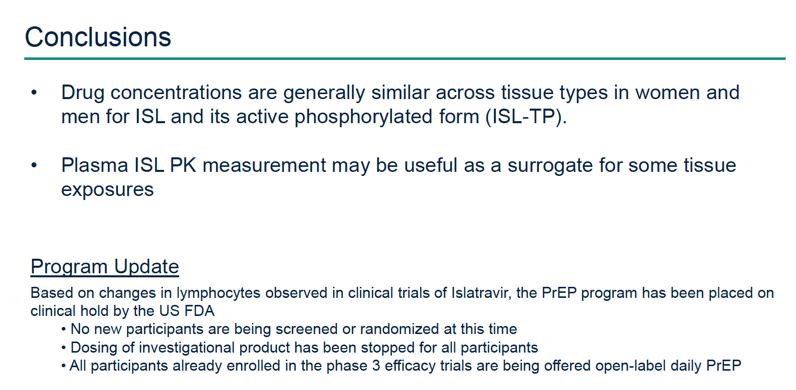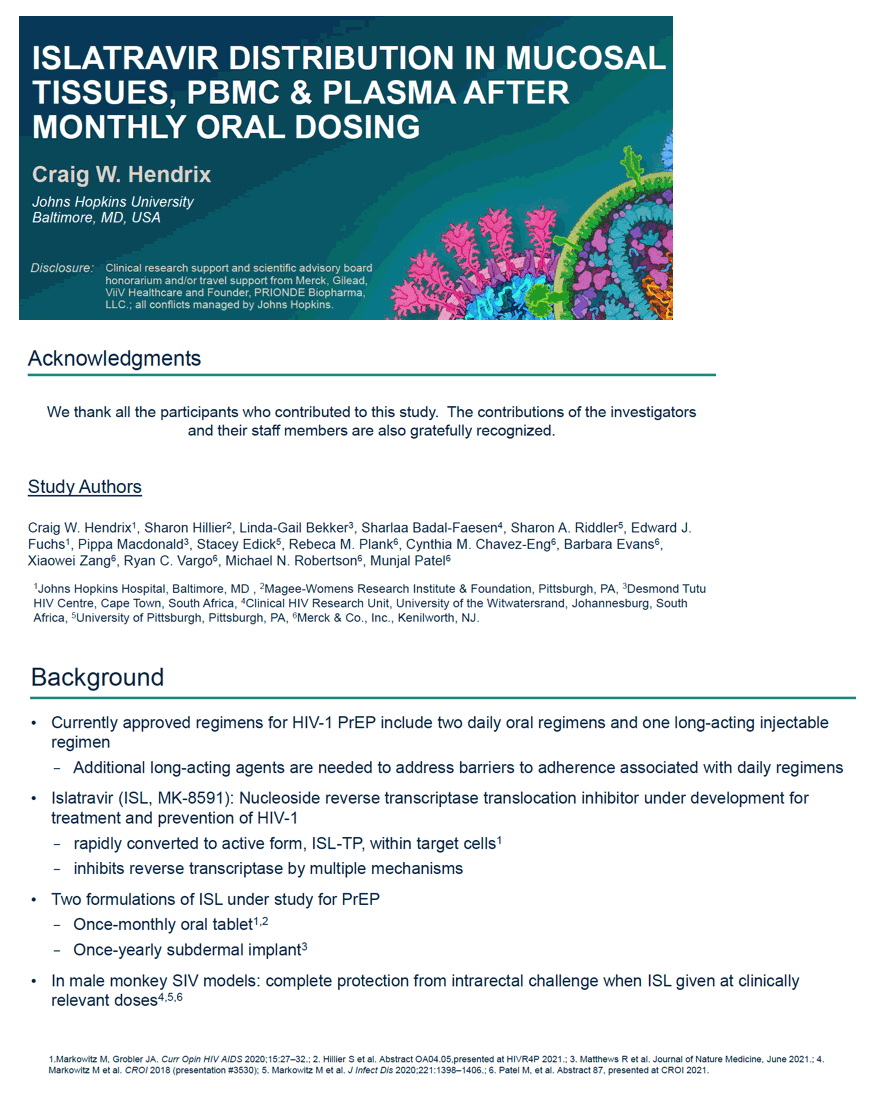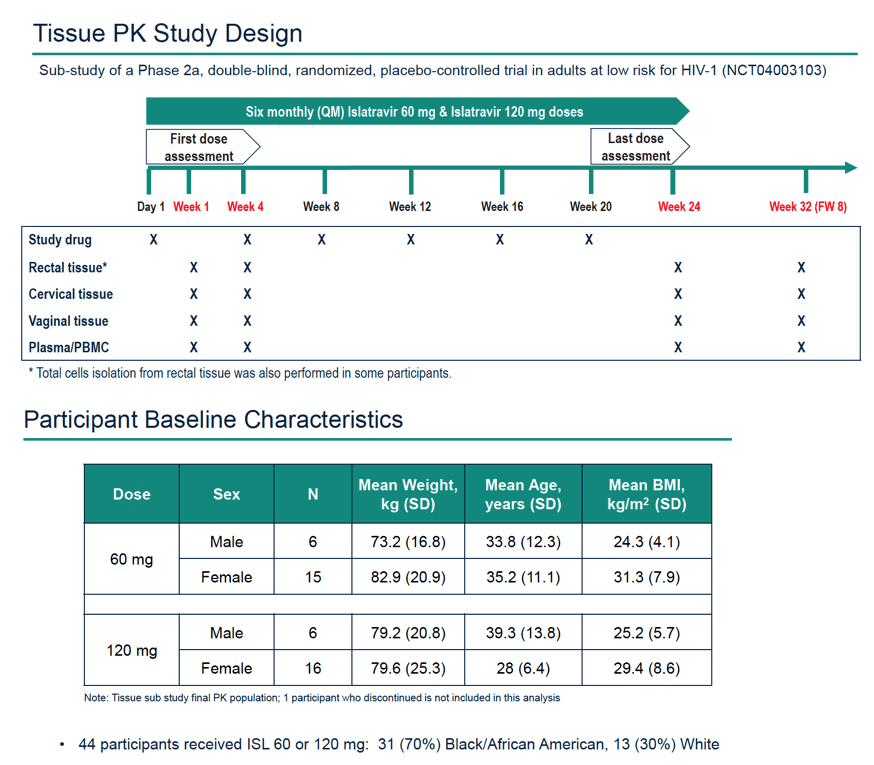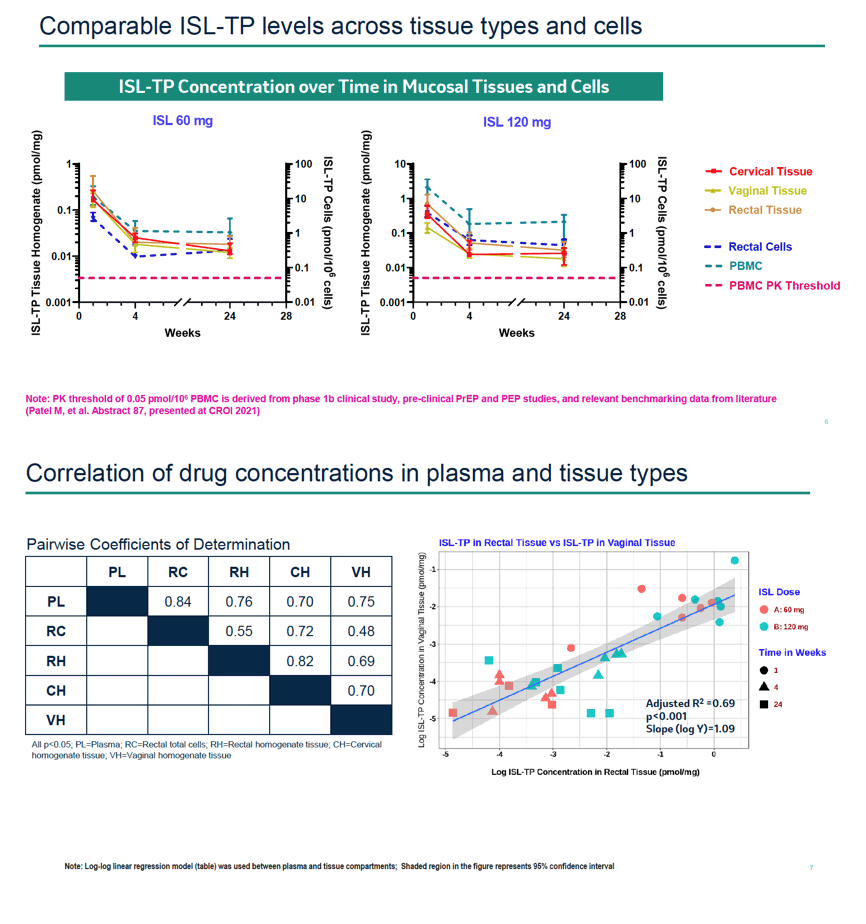 |
 |
 |
| |
ISLATRAVIR DISTRIBUTION IN MUCOSAL TISSUES, PBMC & PLASMA AFTER MONTHLY ORAL DOSING
|
| |
| |
CROI 2022 Feb 11-16
Craig W. Hendrix1, Sharon L. Hillier2, Linda-Gail Bekker3, Sharlaa Badal-Faesen4, Sharon A. Riddler5, Edward J. Fuchs1, Pippa J. Macdonald3, Stacey Edick6, Rebeca M. Plank7, Cynthia M. Chavez-Eng7, Barbara Evans7, Xiaowei Zang7, Ryan Vargo7, Michael N. Robertson7, Munjal Patel7
1Johns Hopkins Hospital, Baltimore, MD, USA, 2Magee–Womens Research Institute, Pittsburgh, PA, USA, 3Desmond Tutu HIV Foundation, Cape Town, South Africa, 4University of Witwatersrand, Johannesburg, South Africa, 5University of Pittsburgh, Pittsburgh, PA, USA, 6University of Pittsburgh Medical Center, Pittsburgh, PA, USA, 7Merck & Co, Inc, Kenilworth, NJ, USA

program abstract
Background:
Islatravir (ISL), a novel nucleoside analogue with multiple mechanisms of action, has the potential to be an important new agent for HIV-1 pre-exposure prophylaxis (PrEP) due to its potent HIV-1 antiviral activity and long intracellular half-life. We evaluated ISL PK in blood and mucosal tissues (rectal, vaginal, and cervical) after monthly (QM) oral dosing; evaluation of terminal phase PK is ongoing.
Methods:
This exploratory tissue PK sub-study is part of a phase 2a, randomized, double-blind, placebo-controlled, multicenter trial of QM ISL (60 mg, 120 mg, or matching placebo) in adults at low-risk for HIV-1 acquisition (NCT04003103). We collected plasma, peripheral blood mononuclear cells (PBMC), and cervical, vaginal, and rectal tissue samples at study Weeks 1 and 4 (1 and 4 weeks, respectively, after the first dose) and at study Week 24 (4 weeks after the last [6th] dose of study intervention). Tissue samples were processed to homogenates (and also to cell lysates for rectal samples). All samples were assayed by liquid chromatography with tandem mass spectrometry. Intercompartmental ratios and paired samples correlations were assessed.
Results:
We enrolled 54 participants (21 in US, 33 in South Africa; 41 females). Mean age was 32 years and mean baseline weight was 81 kg. Following ISL administration, ≥95% of samples had quantifiable parent ISL and ≥88% had ISL-triphosphate (ISL-TP) across all tissues and time points. ISL-TP trough concentrations were comparable across cervical, vaginal, and rectal tissues (Figure). Plasma ISL and ISL-TP in cervical, vaginal, and rectal tissues were highly correlated (adjusted R2 ≥0.7, p<0.001); ISL-TP across tissue types and across rectal matrices were also strongly correlated (adjusted R2 ≥0.6, p<0.001). The average ratio of ISL-TP between PBMCs and rectal cells at Week 4 was ~5-8. Week 4 ISL-TP in PBMC and in rectal cells exceeded the PK threshold for prophylaxis (0.05 pmol/106 PBMC) by >20 and >4 fold, respectively. Our findings suggest the PBMC-based PK threshold was achieved in all target tissues, given correlations within rectal matrices and similarities among all tissue homogenates.
Conclusion:
ISL and ISL-TP were measurable and comparable in cervicovaginal and rectal tissues suggesting that ISL distributes similarly to these tissues and is present in its active, phosphorylated form (ISL-TP). Systemic ISL PK can be used as a surrogate for tissue exposures.



|
| |
|
 |
 |
|
|